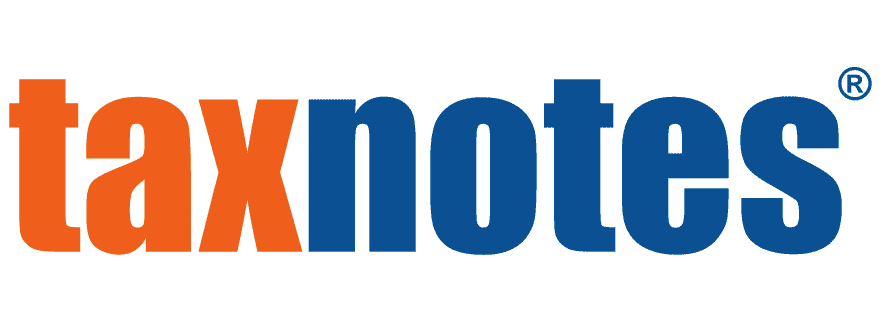If you have any questions about this article, please send us a message.
Last week, President Biden signed into law the Inflation Reduction Act (IRA, P.L. 117-169), a spending bill that includes $300 billion in energy and climate reforms and the ability for the U.S. health secretary to negotiate Medicare drug prices.
However, those were not the only measures included in the bill. The IRS also received significant monies from the passage of the IRA, including $79.6 billion over the next decade.
As of July 29, the IRS had approximately 15 million unprocessed individual, amended, and employment tax returns. Also, with the influx of COVID-relief-related phone calls, the IRS’s level of service has dropped below 15 percent. The influx of funding is crucial and a much-needed boost for the agency as it works through extensive backlogs and looks to find strong footing for its enforcement efforts. The IRA specifically increases the agency’s enforcement budget by approximately 69 percent in the next 10 years, with an added $45.6 billion, while the agency’s operations support receives an added $25.3 billion, business system modernization receives an added $4.8 billion, and taxpayer services an added $3.2 billion.
After Biden’s signing of the bill, IRS Commissioner Charles Rettig expressed his excitement and described the potential impact of these newfound funds. “The IRS has struggled for many years with insufficient resources to fulfill our important mission. During the next 10 years, these funds will help us in many areas, including adding critical resources to not just close the tax gap but meaningfully improve taxpayer service and technology,” Rettig said. “This will allow the IRS to provide services to taxpayers in the manner they expect and deserve.”
The agency’s more recent challenges dealing with filing backlogs have not gone unnoticed, with the American Institute of CPAs demanding action as the IRS continues to be hamstrung by lacking resources. This backdrop makes the timing of Biden’s signing of the IRA incredibly important.
Timing That Matters
The timing of these new funds also coincides with the IRS recently releasing its strategic plan for 2022 to 2026. As part of its strategic plan, the Service listed four major goals it will be focusing on in the next several years: service, enforcement, people, and transformation.
The agency’s announced enforcement priorities focusing on noncompliant, high income, and high-wealth taxpayers, along with partnerships and corporations, will be an opportunity for the IRS to showcase what it can do in this arena with the extra funding it has been seeking for the last decade. Further, the IRS recently announced a new initiative, the Joint Strategic Emerging Issues Team, or JSEIT, which will address developing issues of noncompliance from a cross-functional perspective. The team will consist of subject matter experts from the four major operating divisions, as well as Criminal Investigation, the Whistleblower Office, and the Office of Research, Applied Analytics, and Statistics. This will be a significant step forward to mitigate abusive transactions in their embryonic stage instead of the IRS deploying considerable resources later, reflecting the campaigns for micro captive insurance and syndicated conservation easements.
In concert with the above initiative, the IRS has also continued its enforcement pressure on the cryptocurrency industry. Last week, the IRS received authority to issue a John Doe summons to another cryptocurrency dealer, SFOX, seeking information about U.S. taxpayers who conducted at least the equivalent of $20,000 in transactions in cryptocurrency between 2016 and 2021 with or through SFOX.7 There have been three John Doe Summons issued on the crypto-related business within the last two years, which will certainly lead to a sizeable number of audits on cryptoholders. Some tax experts have opined that cryptocurrency has raised the tax gap to approximately $1 trillion. With that being said, to maximize the impact of these added funds on the agency’s enforcement efforts, the IRS should follow its own strategic plan, which has worthy goals, but it should try to put heavy emphasis on two distinct areas: technology and talent.
Bolstering Innovation Efforts
The IRS has become overly reliant on “legacy” technologies and systems that the agency’s own IT function has said are more than 25 years old. A recent report from the Treasury Inspector General for Tax Administration outlined the fact that 231 IT systems used by the agency are legacy systems. When it comes to new technologies, IRS employees should be able to tap into a variety of programs that can help keep track of taxpayers and their compliance history, as well as detect anomalies indicative of tax noncompliance that need further investigation. For instance, the IRS has made continual strides in developing a top-notch enterprise case management system that will provide agents with the full scope of a taxpayer’s compliance history and can help connect the dots between what has been reported by taxpayers and what their true tax obligation might be. Currently, the IRS has approximately 60 legacy case management systems, which presented a challenge for personnel to provide effective customer service and to see the broader compliance picture. These types of programs can also help decrease the time it takes for compliance issue resolution, which will in turn bolster public confidence in the agency’s ability to handle these types of tax matters.Creating the Right Team and Organizational Structure
A critical notion that the IRS must not forget when leveraging these new funds is that new
programs, systems, and processes are only as good as the people who are working on them. As such, the IRS must heavily invest in finding the right talent to achieve its prerogatives.
Between fiscal 2010 and 2020, the IRS was down more than 17,000 enforcement personnel,
leading to reduced audit rates and a collection rate that has not reached the maximum potential. Step 1 is to begin filling those roles. As Rettig stated, resources from the IRA will be used to help the agency invest in “hiring, training and IT systems that will allow us to better serve all taxpayers.”
Traditionally, division heads have required approval to hire each new agent that comes into
the IRS. Once those agents become a part of the agency, they are trained by the Service’s top talent. However, this is a significant drag on agency performance because it limits the amount of available time the IRS’s senior agents can work cases.
Over the last few years, the agency has used critical pay authority regarding IT positions;
however, that authority ends in September 2025. Its continuation would allow the agency a tool to efficiently recruit employees with the necessary technical expertise to implement and work through the IRS restructuring efforts.
To solidify trust in the American people, the agency must work to hyper focus on the nation’s high-net-worth end of the noncompliance spectrum. This was a promise made by Rettig, as
well as Treasury Secretary Janet Yellen and the Biden administration, which claimed the funds wouldn’t be used to increase audit efforts, relative to historical figures, against small business or households below the $400,000 threshold.
One of the critical points made in the recently released IRS strategic plan was that despite the
agency’s workload constantly increasing, the funding given to the Service has been on a steady
decline for the last several years.
The IRS collects approximately $4.1 trillion in gross revenue each year, which makes up around 96 percent of the country’s entire gross revenue. In short, the ability for our country to thrive financially is directly tied to the success of this agency.
As the agency begins to work its way through the backlog created by a perfect storm of the
pandemic, a lack of resources, and an increased workload, it can lean on these new monies from the IRA to work toward a new era, one that leans into the power of talent and technology.
About the Author

Eric Hylton held several prominent positions at the IRS, including serving as Deputy of the Criminal Investigation Division and as CI’s head of International Operations. As National Director of Compliance, Eric employs his years of experience at the IRS to assist alliantgroup’s clients as an ambassador for U.S. small and medium sized businesses (SMBs) and in helping others become tax compliant.



